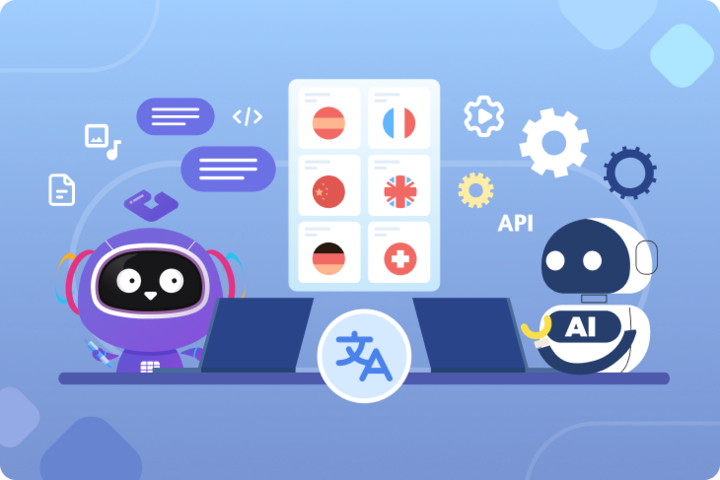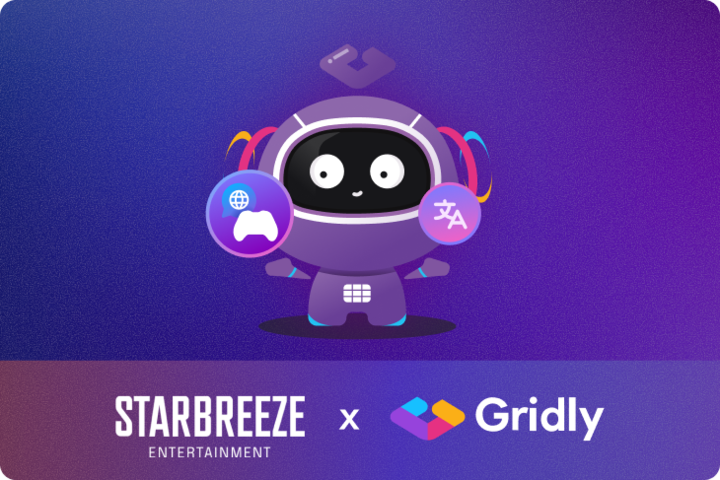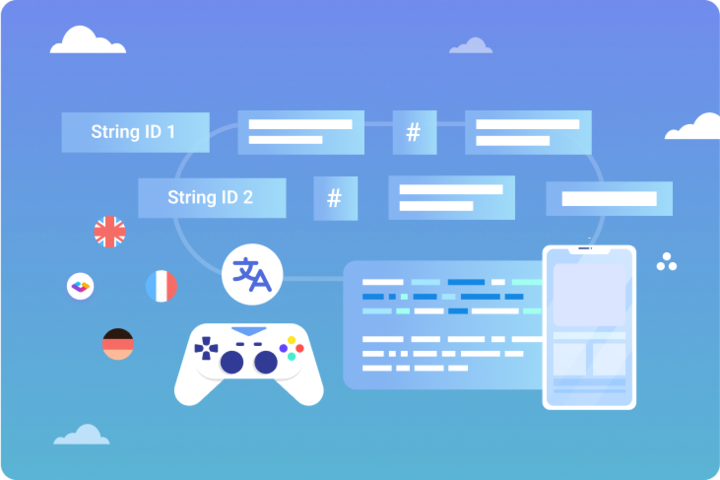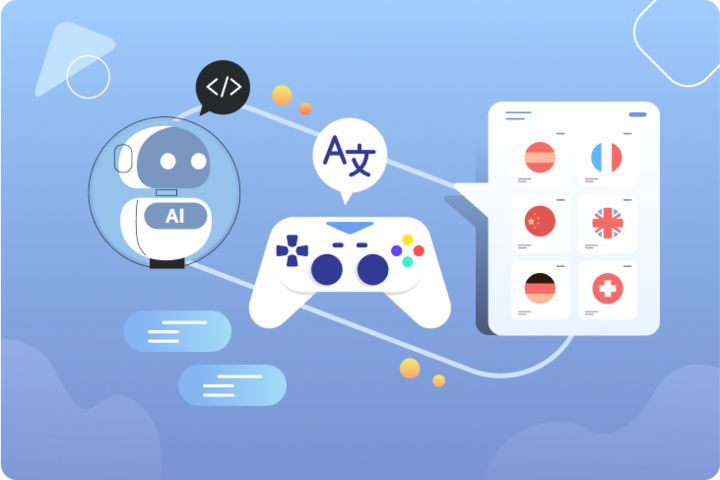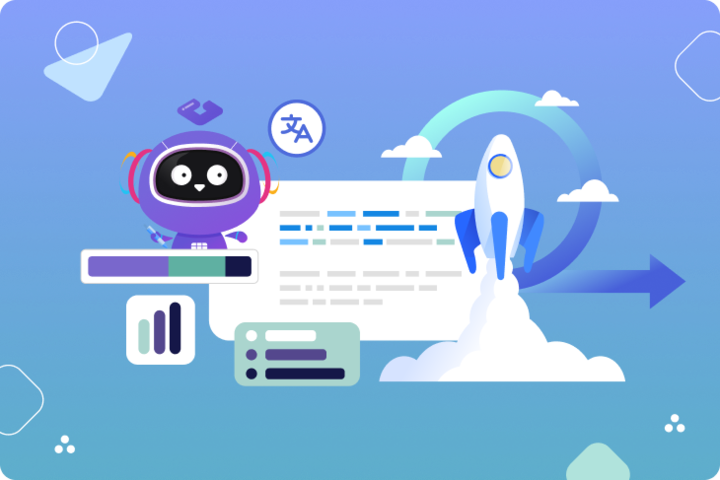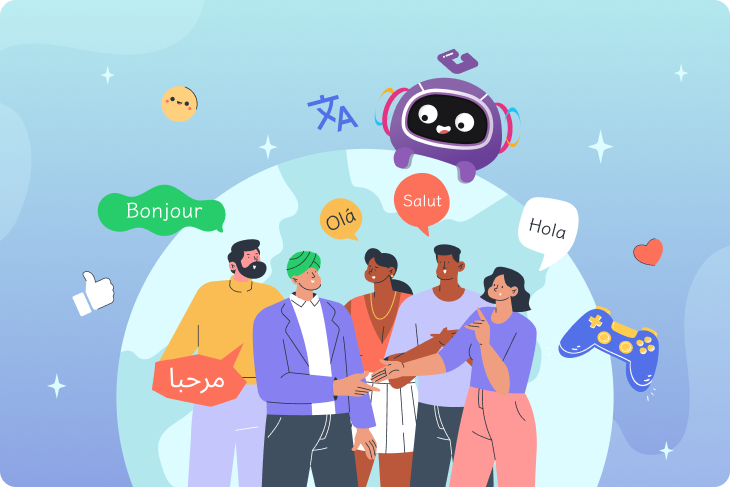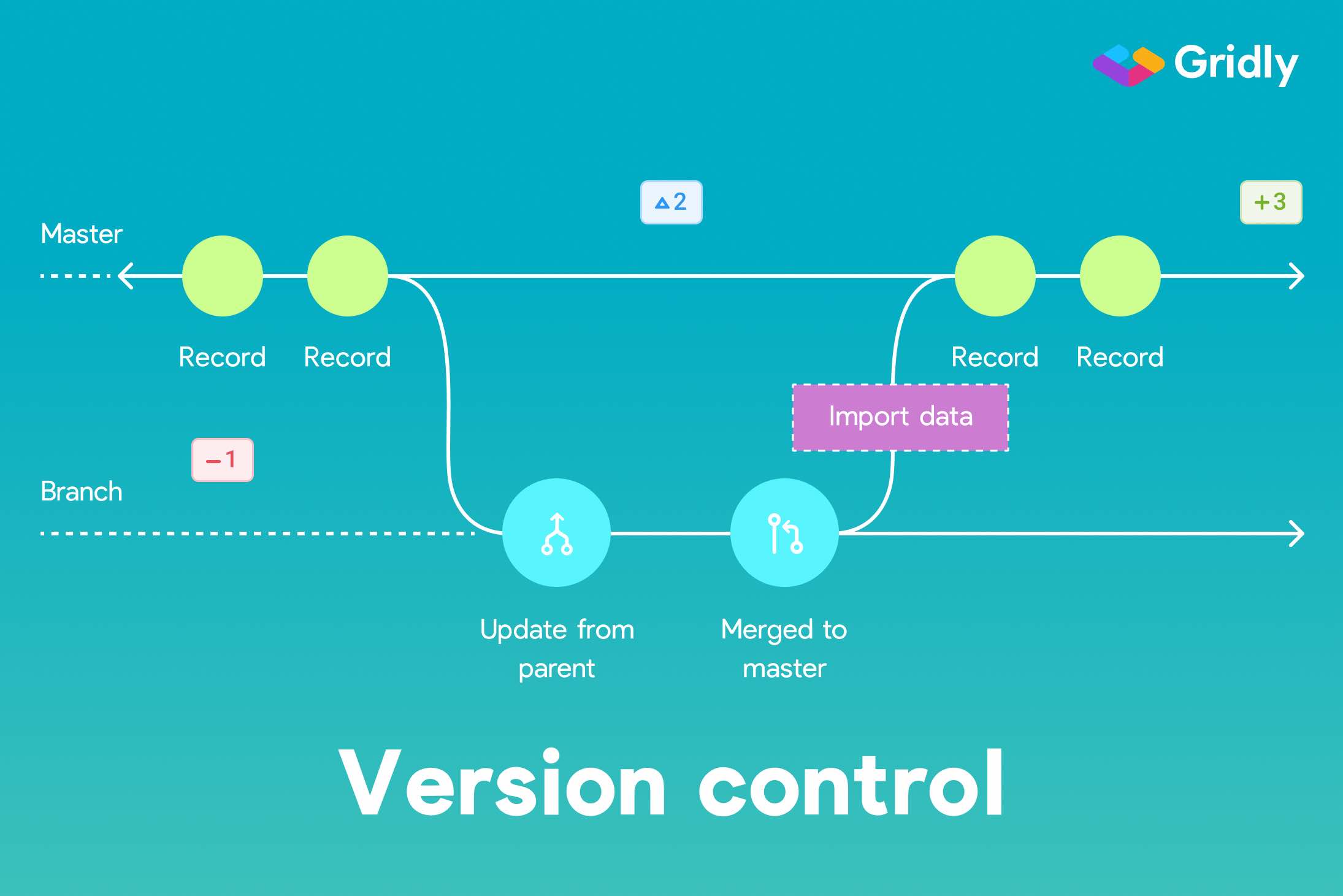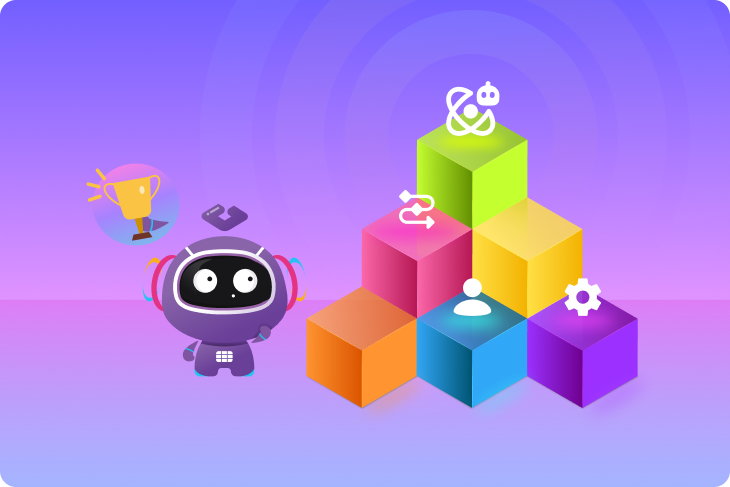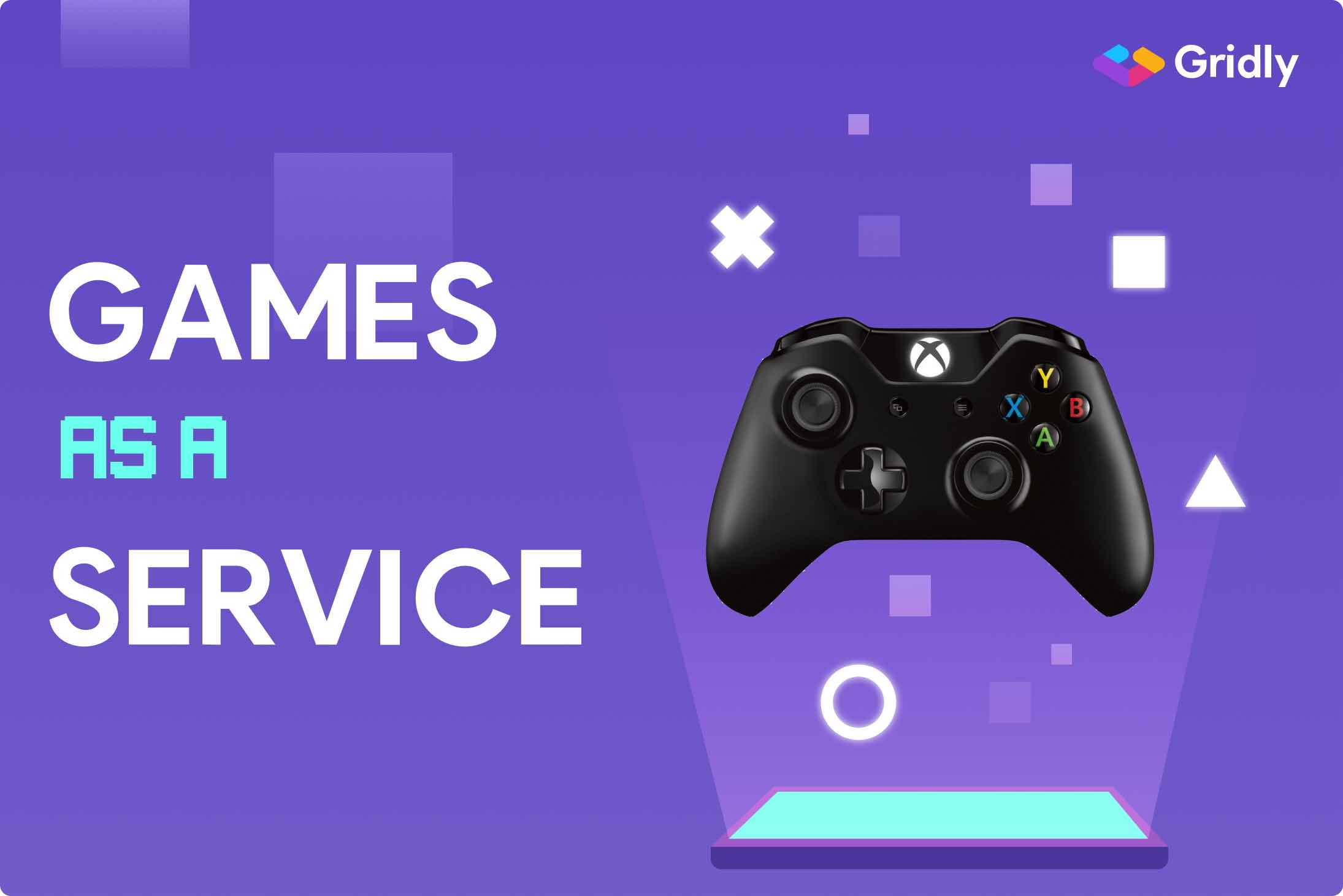What’s covered
- What is AI localization automation?
- What are LLMs and why do they matter for AI localization automation?
- Why is API automation difficult for localization teams?
- How accurate is AI-powered localization automation?
- AI localization automation vs traditional methods
- What can AI localization automation do for your workflow?
- How secure is offline AI for localization?
- What this means for Gridly users
- How to implement AI localization automation: 5 steps
- The future of AI localization automation
- Frequently asked questions about AI localization automation
- Conclusion
TL;DR: New AI technology lets localization managers automate complex workflows using simple, natural language instructions - no coding required. Recent research shows that domain-specific AI training can reliably generate API code for tasks like project setup, bulk updates, and report generation, all while running securely offline for confidential content.
Every localization manager knows the frustration: You have a crystal-clear vision of the workflow you need. You know exactly how your projects should be structured, which fields your translators require, how the review process should flow. But translating that mental model into actual implementation means either spending hours clicking through interfaces or waiting for a developer to free up time for “just a quick automation task”. The technical barrier between knowing what you need and making it happen has been the defining constraint of localization management for years.
That’s changing now. Recent advances in artificial intelligence and large language models (LLMs) are making it possible to automate complex API workflows with natural language commands instead of manual coding. Research by N. S. Szolnoki on fine-tuning LLMs for API code generation has shown that AI localization automation can achieve high accuracy in production environments.
For localization teams juggling multiple projects, languages, and stakeholders, this technology represents a fundamental shift. The technical barrier that once required developers to build automation scripts is dissolving. Soon, localization managers will be able to create sophisticated workflows as easily as they write an email.
In this post, we’ll explore how LLM technology works, examine Szolnoki’s research showing near-perfect accuracy in AI-powered localization automation, and discuss what this means for the future of localization management.
What is AI localization automation?
Before we dive deeper, let’s clarify what we mean by “AI localization automation” in this context. This article isn’t about using AI to translate content - that’s a separate and equally important application of AI in localization. Instead, we’re focusing on using artificial intelligence to automate the operational and technical workflows in localization management.
Think of it this way: AI localization automation means using natural language to tell your system what you want to accomplish, and having AI generate the code that makes it happen. Rather than writing scripts or clicking through dozens of screens to set up a new project, configure fields, update statuses, or generate reports, you simply describe what you need in plain English, and AI handles the technical implementation through API calls.
This is about automating the “how” of localization management - creating projects, structuring data, managing workflows, coordinating tools, and extracting information - so you can focus on the “what” and “why”: the strategic decisions that require your expertise.
What are LLMs and why do they matter for AI localization automation?
Large language models are AI systems trained on vast amounts of text data to understand and generate human language. You’ve probably interacted with them through tools like ChatGPT, Claude, or Gemini. But their capabilities extend far beyond answering questions or writing content.
At their core, LLMs excel at pattern recognition and translation - not just between human languages, but between different forms of communication. This makes them uniquely suited for localization work. AI is already transforming the translation process itself, with neural machine translation and LLM-powered AI translation platforms helping linguists work faster and more accurately.
Learn more about machine translation types and applications
The entire localization workflow involves managing structured data, coordinating complex processes, and handling repetitive setup tasks. This is where AI’s capabilities become even more valuable.
Here’s where it gets interesting for API automation: LLMs can learn to translate natural language instructions into executable code. Instead of a developer writing a Python script to create a new translation project with specific fields and language pairs, a localization manager could simply describe what they need, and the AI generates the working code automatically.
For localization professionals, this technology bridges a critical gap. You understand your workflows better than anyone - the project structures you need, the columns that make sense for your translators, the status updates that keep stakeholders informed. But implementing these workflows through APIs has traditionally required technical expertise you might not have on your team.
LLMs change this equation entirely. They let you express your domain expertise in your own words while handling the technical implementation automatically.
Why is API automation difficult for localization teams?
If you’ve ever tried to automate workflows using APIs, you know the challenge. API documentation might as well be written in a foreign language, filled with terms like endpoints, payloads, authentication headers, and response codes. Even when documentation is excellent, there’s a learning curve.
Let’s say you want to automate a common localization task: creating a new project with specific fields for context, character limits, and translator notes. Using a REST API - take Gridly’s as an example - you’d need to:
- Understand the authentication mechanism and generate valid credentials.
- Identify the correct API endpoint for creating your project structure.
- Format your request with the proper JSON structure.
- Handle the response and extract the project identifier.
- Make additional API calls to add your custom fields and configurations.
- Implement error handling for each step.
- Test everything to ensure it works as expected.
For a developer, this might take an hour. For a non-technical localization manager, it could take days of trial and error - or it simply doesn’t happen at all.
The workarounds are familiar to anyone in the industry. You manually click through user interfaces, repeating the same setup steps for each new project. You maintain sprawling spreadsheets to track what needs to be done. You wait for developers to become available for “quick automation requests” that somehow never feel quick. You accept inefficiency as the cost of doing business.
But here’s the critical insight: The gap isn’t in your understanding of what needs to happen. You know exactly what workflow you need. The gap is purely technical - knowing how to express that workflow in a language that APIs understand.
This is precisely where AI excels.
How accurate is AI-powered localization automation?
Recent research by N. S. Szolnoki titled “Fine-Tuning LLMs for Secure Prompt-to-API Code Generation in Domain-Specific Environments” has demonstrated just how effectively LLMs can bridge this gap when properly trained. Using Gridly’s REST API as a test case, Szolnoki explored whether compact AI models could learn to generate production-ready Python code from simple natural language instructions.
A baseline model - a general-purpose LLM with no specialized training - achieved only 10.9% accuracy when asked to generate code for Gridly API tasks. Most of its outputs contained syntax errors, referenced non-existent endpoints, or failed to handle authentication properly. Only 27% of the generated code was even valid Python, let alone functionally correct.
After fine-tuning the same model with domain-specific training, accuracy improved to 99.67%. The trained model consistently generated syntactically correct, functionally accurate code. The outputs passed validation tests in a secure sandbox environment.
Key takeaway: Domain-specific AI training improves automation accuracy from 10.9% to 99.67%, representing a leap from “completely unreliable” to “production-ready” for enterprise use.
How the research worked
The research team created a dataset of 3,000 instruction-code pairs specifically for Gridly API operations. Each pair consisted of a natural language instruction - something a localization manager might actually say - paired with the correct Python code to accomplish that task.
For example:
- Instruction: “Create a new Grid named ‘Q4 Mobile Launch’ with French and German as target languages.”
- Output: Complete Python function with proper authentication, error handling, and API calls.
These pairs covered the full range of common operations: creating Grids, adding columns with specific data types, updating translation statuses, managing user permissions, and extracting data for reporting.
The team used a technique called “instruction tuning” to teach a model called Mistral-7B how to recognize patterns in these instructions and generate the appropriate code. What makes this approach particularly clever is the use of parameter-efficient training methods (LoRA and QLoRA, for those interested in the technical details) that allow the model to run on standard hardware rather than requiring massive cloud infrastructure.
The training took place entirely in an offline, secure environment - an important consideration for localization work involving confidential content like unreleased games or proprietary product information.
Why domain-specific training matters
You might wonder: Can’t general AI tools like ChatGPT already write code? Why does specialized training make such a difference?
The answer lies in reliability and precision. General-purpose AI models can produce code that looks plausible, but they often make subtle mistakes - wrong endpoint names, incorrect parameter formats, missing error handling, or outdated API patterns. For a task where the code must work correctly every single time, 80% accuracy isn’t good enough.
Domain-specific training helps the model learn the specific patterns, conventions, and structures of a particular API. It learns not just how APIs work in general, but how this specific API works. It internalizes the authentication flow, the endpoint naming conventions, the response formats, and the common operations that users actually need.
The research demonstrated this effectively. Using BLEU and ROUGE scores - standard metrics for measuring how closely generated text matches reference text - the fine-tuned model achieved scores of 0.9967 and 0.99 respectively. These numbers indicate strong alignment with human-written code.
| Model | BLEU | ROUGE-Lsum |
|---|---|---|
| Mistral-7B-Instruct (Pretrained) | 0.109 | 0.11 |
| Mistral-7B-Instruct (Fine-Tuned) | 0.9967 | 0.99 |
Additionally, the generated code snippets executed successfully and produced the expected results. This represents a significant improvement in reliability for practical applications.
AI localization automation vs traditional methods
Understanding the practical differences helps illustrate why this technology represents such a significant shift:
| Aspect | Manual/Traditional | AI Localization Automation |
|---|---|---|
| Setup time for new projects | Hours to days | Seconds |
| Technical expertise required | High (developers needed) | None (plain language) |
| Code accuracy | Prone to human error | 99.67% |
| Scalability | Limited by team size | Unlimited |
| Security for sensitive content | Depends on implementation | Can be fully offline/air-gapped |
| Cost per automation | High (developer time) | Low (automated generation) |
| Adaptation to API changes | Manual code updates | Retraining on new patterns |
Key takeaway: AI localization automation doesn’t just make existing processes faster - it fundamentally changes who can create automation and how quickly workflows can evolve.
What can AI localization automation do for your workflow?
So what does this technology actually enable? Let’s explore concrete scenarios where AI-powered API automation could transform your daily workflows.
Automated workflow creation
Imagine you’re launching a new mobile game in twelve markets simultaneously. Each market needs its own Grid with language-specific columns: target language, dialect variations, cultural adaptation notes, character limits for UI strings, and review status tracking.
Today, you might spend an hour clicking through interfaces to set this up. Or you’d write a ticket for your development team and wait for them to find time in their sprint.
With AI-powered automation, you describe what you need:
“Create twelve Grids for the mobile game launch. Each Grid should be named after the target market and include columns for target language, dialect notes, cultural adaptation notes, character limit with a maximum of 50 characters, and review status. Set up French, German, Spanish, Italian, Portuguese, Japanese, Korean, Chinese Simplified, Chinese Traditional, Russian, Polish, and Turkish.”
The AI generates the code, the system validates it, and seconds later your entire project structure is ready. Your translators can start working immediately rather than waiting for manual setup to complete.
Bulk operations made simple
Mid-project scope changes are inevitable in localization. A client decides to expand from five languages to fifteen. A feature gets cut, making hundreds of strings obsolete. Terminology changes and you need to update dozens of entries.
These bulk operations are tedious when done manually and error-prone when done quickly. They’re perfect candidates for AI localization automation, but writing custom scripts for one-off changes rarely feels worth the effort.
Natural language automation eliminates this friction. “Update all strings in the UI_Buttons category that are marked ‘In Progress’ to ‘Ready for Review’ across all language Grids.” The AI handles the complexity - iterating through Grids, filtering by category and status, making the updates, and confirming completion.
What might have taken an hour of careful clicking now takes thirty seconds.
Integration with existing tools
Most localization workflows involve multiple platforms. You might use Gridly for translation management, Jira for project tracking, Slack for team communication, and various game engines or CMS platforms for content integration.
Connecting these systems typically requires custom integrations built by developers. Each integration is a project with planning, development, testing, and maintenance overhead.
AI-powered automation makes these connections more accessible. “When a Grid reaches 100% translation completion, create a Jira ticket for QA review and post a message in the #localization Slack channel with the Grid name and target language.”
The AI can generate the code to connect these systems, handling authentication for each platform, managing the workflow logic, and ensuring reliable execution. You’re describing the workflow you need rather than specifying how to implement it.
Report generation and data extraction
Stakeholders always want reports. How many strings are translated? What’s the completion percentage for each language? Which strings have been flagged for cultural review? What’s the average time from translation to approval?
Generating these reports manually means exporting data, manipulating spreadsheets, and creating visualizations. It’s time-consuming enough that reports happen weekly or monthly rather than on-demand.
With natural language automation, you can ask for exactly the information you need: “Show me all strings added in the last seven days that are still untranslated, grouped by target language and priority level. Include the string ID, source text, and assigned translator for each.”
The AI generates code to query your data, applies the filters you specified, formats the output, and delivers the report. Need the same report daily? The generated code becomes a reusable script that runs automatically.
How secure is offline AI for localization?
Here’s something that might not be obvious: One of the most important aspects of the research we’ve discussed is that it all happened offline, in a completely isolated environment with no internet connectivity.
Why does this matter for localization?
Consider what you’re actually working with. Unreleased game content that can’t leak before launch - making AI translation in game localization a particularly sensitive application. Proprietary product information that competitors would love to access. Personal data subject to GDPR and other privacy regulations. Corporate communications that must remain confidential.
Many AI tools today require sending your data to cloud services for processing. You type a prompt, it gets transmitted to servers operated by OpenAI, Google, Anthropic, or other providers, an AI model processes it in their infrastructure, and the results come back to you.
For sensitive localization content, this creates unacceptable risk. You’re potentially exposing confidential information to third-party services, creating compliance headaches, and losing control over where your data travels and who can access it.
Szolnoki’s research demonstrates that AI models can be trained and deployed entirely within your own secure infrastructure. The model runs on your servers, in your data center, behind your firewall. Nothing leaves your environment. No external services are queried. No data is transmitted to third parties.
Key takeaway: Air-gapped AI deployment means you can leverage automation while maintaining complete control over sensitive content - critical for industries like gaming, healthcare, finance, and government.
This “air-gapped” deployment model means you can leverage the power of AI automation while maintaining complete control over your sensitive content. For enterprise clients, especially in industries like gaming, healthcare, finance, or government, this security posture isn’t just preferable - it’s often mandatory.
The research specifically validated this approach by training and running the model in an isolated virtual machine with no network connectivity. The model performed well offline, comparable to cloud environments, showing that security and automation benefits can coexist.
What this means for Gridly users
Gridly’s REST API has been designed with automation in mind from the beginning. It’s well-documented, consistently structured, and follows RESTful best practices. These characteristics make it an ideal candidate for AI-assisted automation.
Szolnoki’s research team chose Gridly specifically because the API structure makes it easy to train AI models effectively. Clear endpoint naming, predictable response formats, comprehensive documentation, and logical operation organization all contribute to better AI understanding and more reliable code generation.
For Gridly users, this foundation means that as AI automation technology matures, you’ll be well-positioned to take advantage of it. The API you’re already using is structured in a way that AI models can learn effectively.
Looking ahead, we see several directions this technology could evolve:
More natural interfaces. Instead of learning API endpoints or navigating user interfaces, you might simply describe what you need in a conversation. “Set up the next project like the last one, but add support for Brazilian Portuguese and reduce character limits by 20%.”
Proactive automation. AI that understands your workflow patterns could suggest automations you haven’t thought of. “I noticed you manually update status fields every Friday afternoon. Would you like me to automate that?”
Intelligent error handling. When something goes wrong - an API call fails, data is missing, a workflow is blocked - AI could diagnose the issue and suggest or implement fixes automatically.
Workflow learning. As you perform tasks, AI could observe and learn your patterns, gradually building a library of automations tailored to your specific needs without requiring explicit instruction.
Szolnoki’s research represents an important validation point on this journey. It demonstrates that the core technology - translating natural language to working API code - shows potential for production applications. The remaining work is integration, interface design, and building the supporting infrastructure to make this accessible to everyone.
How to implement AI localization automation: 5 steps
Even before fully automated AI tools become available, you can prepare your localization operations to take advantage of AI localization automation when it arrives.
Step 1: Audit your current workflows. Document the repetitive tasks you perform most often. Which setups are you recreating for each project? What bulk operations do you run regularly? Which reports do stakeholders request most often? Write these down in plain language, as if you were explaining them to a new team member.
Step 2: Understand your API usage. If you’re already using Gridly’s API - whether through custom integrations, scripts, or third-party tools - document what you’re doing and why. This inventory becomes the foundation for identifying automation opportunities. If you haven’t explored the API yet, now is a good time to start. Even basic familiarity with what’s possible through API access will help you recognize opportunities for automation.
Step 3: Build your instruction library. Natural language descriptions are exactly the kind of input that AI automation systems need. For example: “Every Monday, I create a Grid for that week’s content release with columns for source text, target language, translator notes, character limit, and review status.” By documenting these now, you’re building the instruction set that could automate your workflows later.
Step 4: Map your integration points. Where do your workflows extend beyond Gridly? Which other tools do you use daily? Where do you manually move data between systems? These integration points are prime candidates for automation. Make a list of the tools in your stack and the connections between them. When AI-powered integration tools become available, you’ll know exactly where to apply them first for maximum impact.
Step 5: Build API literacy. The best way to prepare for AI-assisted automation is to become comfortable with what your API can do. Explore Gridly’s API documentation. Try making some manual API calls using tools like Postman or curl. Experiment with simple scripts if you’re comfortable with that. You don’t need to become a developer, but basic API literacy helps you recognize opportunities and communicate effectively about automation needs.
The future of AI localization automation
Szolnoki’s research on fine-tuning LLMs for API code generation represents more than just an academic exercise. It’s a proof of concept that the fundamental technology for natural language API automation works reliably at production scale.
We’re at an inflection point where several technological trends are converging:
AI models are getting smaller and more efficient. The research used a 7-billion parameter model - compact by AI standards - running on standard hardware. This makes local deployment practical and affordable.
Training techniques are becoming more accessible. Methods like LoRA and QLoRA mean you don’t need massive data centers to adapt AI models to specific domains. This democratizes the ability to create specialized automation tools.
API design is standardizing. As more platforms adopt RESTful principles and comprehensive documentation, it becomes easier to train AI models that work reliably across different services.
Security requirements are driving offline deployment. Rather than being a limitation, the need for air-gapped AI solutions is accelerating innovation in local deployment and edge computing.
For localization management, these trends point toward a future where technical barriers dissolve. The deep domain expertise that localization professionals possess - understanding cultural nuance, managing translator workflows, coordinating across stakeholders - becomes the differentiating skill. AI localization automation handles the technical implementation of workflows, making it a commodity handled by AI assistants.
This doesn’t eliminate the need for developers. Complex systems still require architectural decisions, performance optimization, security hardening, and integration design. But it does shift the focus from “writing code to accomplish routine tasks” to “designing systems that scale and evolve.”
For localization teams, this means spending less time on mechanical setup and maintenance, and more time on the strategic work that creates value: choosing the right languages for market expansion, optimizing translator workflows for quality and efficiency, crafting terminology that resonates across cultures, and ensuring consistent brand voice in every market.
Frequently asked questions about AI localization automation
How accurate is AI for automating localization workflows?
Research by N. S. Szolnoki shows that domain-specific AI training can achieve 99.67% accuracy when generating API code, compared to 10.9% for general-purpose models. This represents a significant improvement in reliability for enterprise applications.
Can AI automate API calls without coding knowledge?
Yes. With instruction-tuned AI models, localization managers can describe workflows in plain language and the AI generates the necessary code automatically. For example, you can say “Create twelve Grids for the mobile game launch with columns for target language and dialect notes” and the AI produces working Python code with proper authentication and error handling.
Is AI localization automation secure for confidential content?
Yes. AI models can be deployed in offline, air-gapped environments, keeping all sensitive localization data within your own infrastructure. The research showed that models can perform well in offline environments, demonstrating that security and automation can be compatible.
What is the difference between general AI and domain-specific AI for localization?
General AI models achieve only 10.9% accuracy for API automation tasks, while domain-specific training improves this to 99.67%. This represents the difference between “completely unreliable” and “production-ready.” Domain-specific AI learns the exact patterns, conventions, and structures of your particular API.
How long does it take to set up AI localization automation?
Once the AI system is trained, tasks that previously took hours can be completed in seconds. For example, setting up twelve language-specific project Grids that would normally take an hour of clicking through interfaces happens instantly with a single natural language command.
Do I need developers to implement AI localization automation?
No. The entire point of AI localization automation is to eliminate the need for developer intervention in routine tasks. However, developers are still valuable for complex system architecture, performance optimization, and integration design.
Can AI handle bulk operations across multiple languages?
Yes. AI localization automation excels at bulk operations. You can describe complex multi-step processes in plain language - like updating hundreds of strings across multiple language Grids based on specific criteria - and the AI generates code to handle all the iterations, filtering, and updates automatically.
How does AI localization automation handle API changes?
When APIs evolve, the AI model can be retrained on updated patterns. This is more efficient than manually updating multiple custom scripts. Well-documented APIs like Gridly’s make this retraining process straightforward.
What tools work best with AI localization automation?
AI localization automation works with any REST API that has clear documentation and consistent structure. Platforms like Gridly that follow RESTful best practices are particularly well-suited because their predictable patterns make AI training more effective. To create a complete localization solution, many teams combine API automation with the best AI translation software for end-to-end workflow efficiency.
Conclusion
The barriers between what you know you need and what you can implement are breaking down. AI localization automation is moving from research labs to production systems, and the implications for localization management are profound.
Szolnoki’s research on fine-tuning LLMs for secure prompt-to-API code generation shows that AI models can achieve high accuracy in generating API automation code from natural language instructions. This technology is moving from research into practical applications, with secure offline deployment models already demonstrated.
This represents an exciting frontier. The well-structured API you’re using today is the foundation for powerful AI localization automation tomorrow. As AI-assisted tools evolve, you’ll be able to describe the workflows you need and let AI handle the technical implementation.
The future of localization management is one where your domain expertise drives everything. You focus on strategy, quality, and cultural adaptation - the things that actually require human judgment and creativity. The mechanical work of setting up projects, managing data, and generating reports becomes as simple as describing what you need.
We’re committed to being at the forefront of this evolution, ensuring that Gridly remains the platform where innovation in localization management happens first.
Want to read the full research? Access N. S. Szolnoki’s complete paper “Fine-Tuning LLMs for Secure Prompt-to-API Code Generation in Domain-Specific Environments” and the accompanying dataset on Zenodo.
Ready to explore what’s possible with Gridly’s API? Check out our comprehensive API documentation to see how structured and automation-friendly our platform is designed to be.
Want to see AI-powered localization workflows in action? Book a demo with our team to learn how Gridly can transform your localization operations.
Ready to get started? Start your free trial and experience the power of Gridly’s flexible, automation-ready platform.
